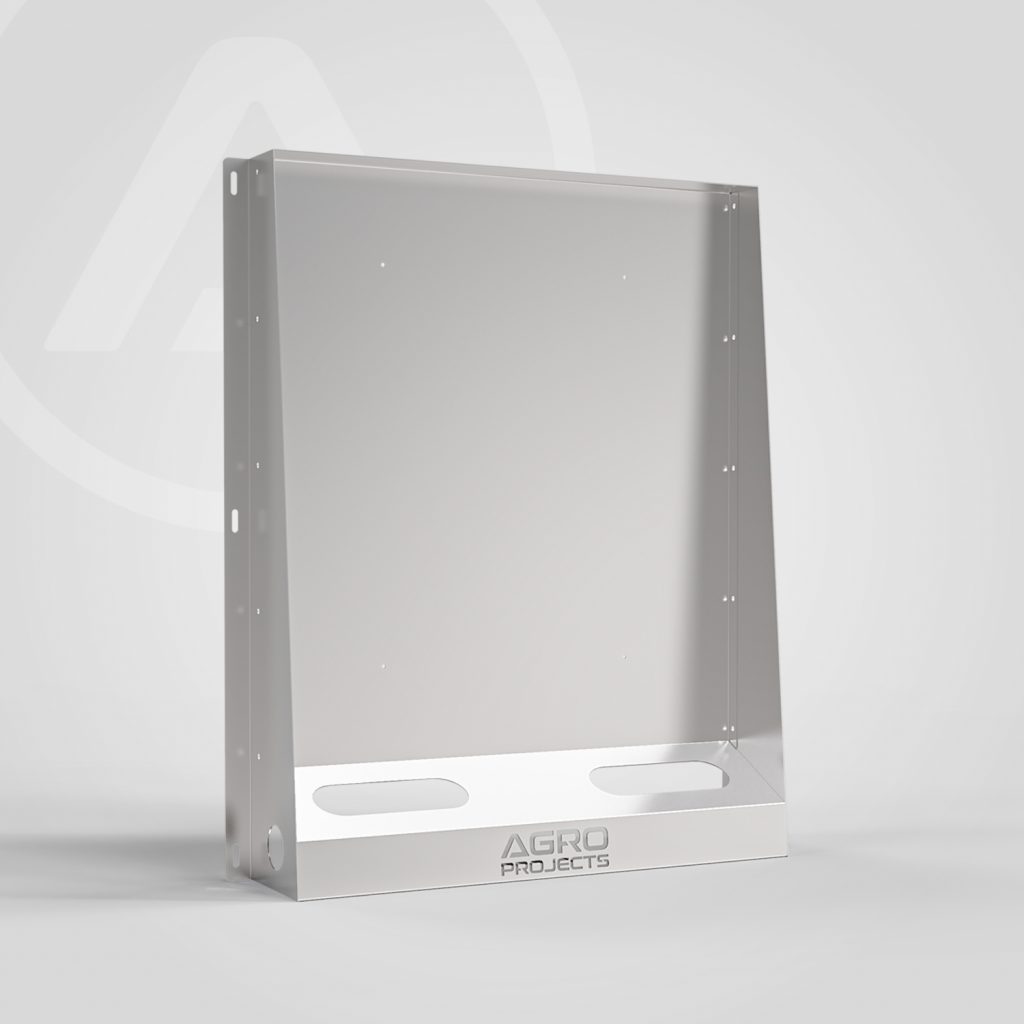Filling hatches for top-filling system
Description
The chute is used for top loading the bunkers with compost and is equipped with a spill protection system. Chute channel passing through the bunker ceiling is made of 2 mm thick stainless steel. Sliding chute lid frame and the sliding track is also made of stainless steel. The lid is made with a 100 mm thick PIR sandwich panel with stainless cladding. The chute has two inspection openings on the sides for cleaning. This product is used for compost loading using a central conveyor belt from a discharge wagon. There is also an option to manufacture chutes for loading with a cascade conveyor belt.
Closing barriers to retain compost
Description
Closing barriers installed at each end of the tunnels to control compost from spilling out. Their task is also to protect the air supply sleeves and gates against possible damage caused by slippage of compost. Side walls, railings (horizontal profiles) and C-profiles (vertical profiles) are made of aluminum, and the remaining elements of the barrier are made of stainless steel. Depending on the options chosen, the design of the railing may consist of only one (lower) or two (lower and upper) parts.
Compost nets gliding and pulling
Description
Compost nets are an important part of compost production process in tunnels equipped with a grid floor. High-quality net textile allows you to empty the tunnel quickly and efficiently. Two net system is used in modern tunnel facilities. A gilding net, mounted on top of the grid with the use of special rubber profiles and a pulling net, which moves the compost when it is pulled onto the winch drum. The length and type of net are selected individually depending on the dimensions of the tunnel and the maximum pulled weight of the compost.
Boards to install automation elements
Description
Automation mounting boards are additional equipment of the composting plant giving a place to install all system controls. On the boards are installed inverters, climate controls and elements of other systems, e.g. the humidification system. The size of the board is selected individually depending on dimensions, quantity and type of equipment that needs to be installed. The boards are made of AISI 304 stainless steel.













